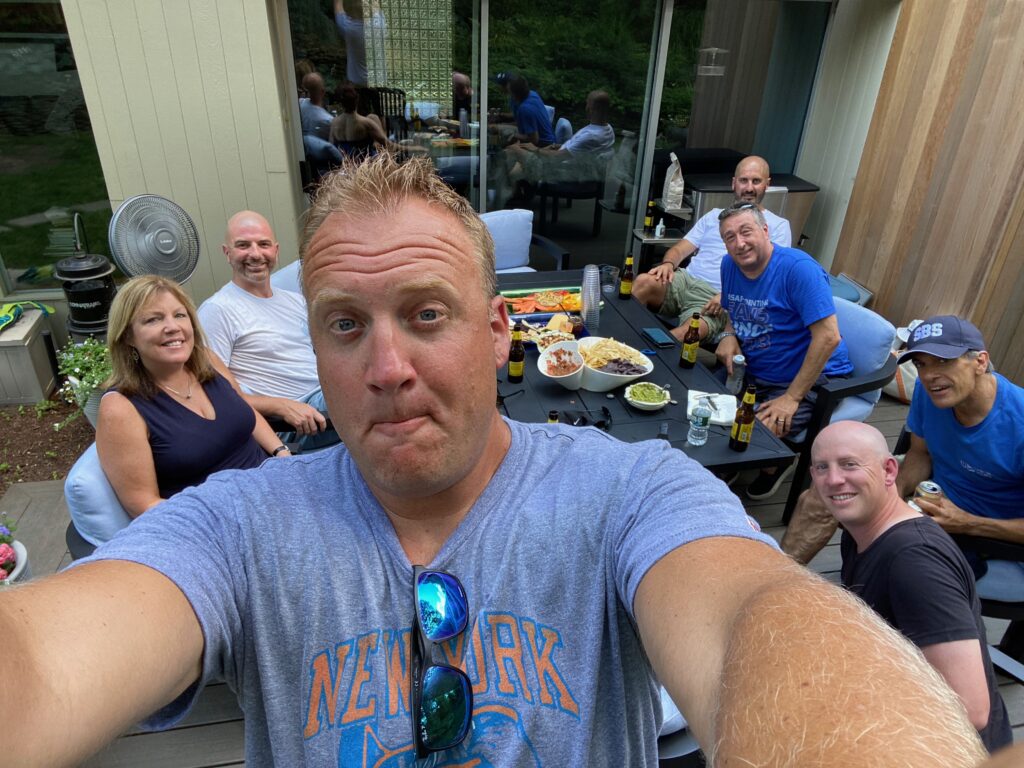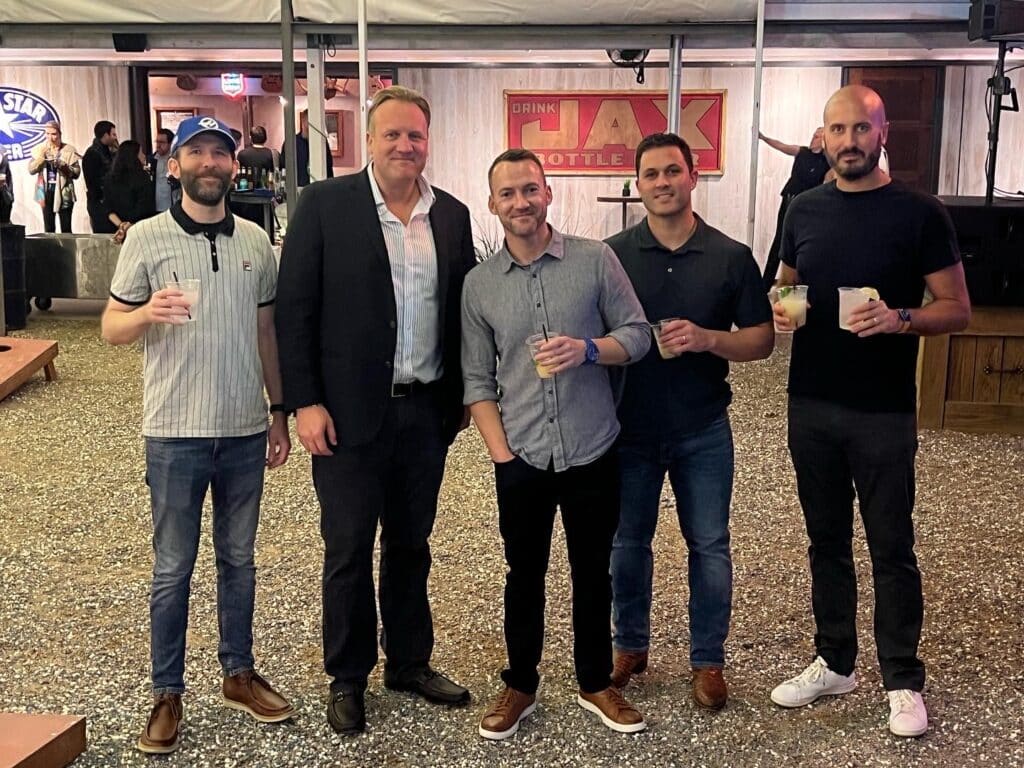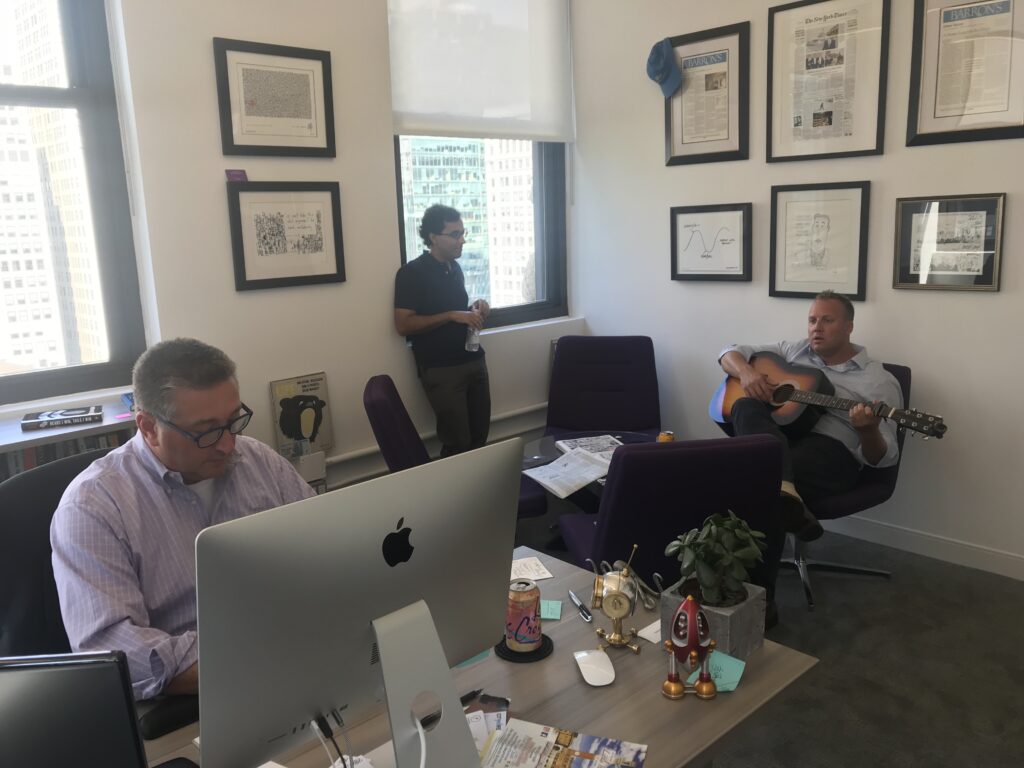I get a lot of emails and LinkedIn messages about our “funnel” these days. Hiring funnel, sales funnel, etc. Usually it’s coming from well-meaning companies who are focused on recruiting and headhunting or lead generation and prospecting. A typical firm in our industry is probably in need of what they’re offering. I have tried to build an atypical firm. So when I see these pitches, I don’t really respond. The main reason is because we don’t have a funnel, we have a filter. I’ll explain.
One of the most crucial signs we see in a potential hire or a prospective client is whether or not they’re familiar with our public-facing work. The content, the message, the brand, the personalities. We want people who get it and want to be a part of it.
I have dozens of people working here who initially came to us and said “Whatever you guys need, I will come in and do it.” That attitude and affinity for the brand is a prerequisite for people who are going to be client-facing advisors. We’ve been writing and speaking for fifteen years on the blogs, on television, on podcasts, at conferences, etc. The advisors who come to us as fans of the message go on to become superstars once they get here. They plug right in to the culture and become evangelists because they believed in it before they were a part of it. They’re grateful for the opportunity to be one of us. That enthusiasm and familiarity enables them to make an immediate impact with our clients on day one.
If a potential advisor hire mentions that they’re considering a move to Ritholtz as well as two or three other firms, it’s probably not going to happen. We’re looking for “You’re the only firm I would leave my current situation for.” We’re asking a lot but that’s our prerogative. It’s why we only bring on one or two advisors a year. In 2022, we didn’t bring on any advisors. No problem. This year we’ve hired one so far. We’re talking to a few people at any given time but we’re very selective. Because it’s not a funnel, it’s a filter.

For other positions, like client service, trading or operations, we don’t expect every candidate to know us inside and out the way a financial advisor might, so in those cases we want to go out of our way to show them our stuff before a formal interview takes place. We’ve been able to bring on some amazing people this way. “Here is who we are. This is what we believe in, this is what we say to the public.” If they absorb and internalize this stuff, it’s a great start. If they come back to us and say “Wow, Future Proof and Animal Spirits and Masters In Business – I want to work at a company like this” it’s going to be a great interview. If they’re not excited about what we’re doing, it probably won’t. That’s okay. There’s a lid for every pot. Plenty of opportunities elsewhere. But the same filter applies.
This kind of recruiting takes a lot of time and effort. It might hold us back in terms of pace in the short-term but, in the long-term, it is essential. Putting the right people in position is probably the number one challenge I face right now. I owe it to my existing co-workers and our clients to do this as deliberately and painstakingly as is necessary.
The alternative is unthinkable. Racing to fill positions with people who don’t recognize what’s special about the firm would dilute what we’re doing. It would hurt the overall employee experience and this would leak through into the client experience. And if you start compromising on those two things, before you know it you don’t have a culture anymore. It’s just an ordinary workplace – politics, pettiness, miscommunication, selfishness. Life is too short to dedicate your time and effort to a place that doesn’t mean anything to anyone. I won’t do it. I won’t ask anyone else to do it.

If you put A players on a team with C players, your A players are going to play down. It rarely works the other way, where the C players play up. They’re C players for a reason. Filtering out C players before they come in won’t solve every issue within a business. People are complicated. Markets are frustrating. Industry dynamics are constantly changing. Workflows are always being refined. Technologies are always being upgraded. Things will happen every week that we have no control over in this business. But if you start with A players, they will find a way over, under, around or through any obstacle. They’re A players for a reason. Having a good filter on the front-end will alleviate a lot of pressure on the back-end.
When it comes to clients, the filter versus funnel idea becomes even more important. What good is going to all that trouble to surround yourself with A players if you’re going to allow anyone with money to walk in and contaminate the ecosystem? It took me a long time to understand this and internalize it. As a retail broker, we were trained to take money from anyone and to sell people whatever they said they were looking for. I think of the brokerage business as a convenience store. “In and out quickly, whatever you need we have it, thank you come again.” On the advisory side of the business, it cannot work that way. You have to be crystal clear about what you’re offering. My partner Kris uses the analogy of running a five star Italian restaurant and having someone walk in and order a hamburger. “We can make a burger, sure, unfortunately that’s not what we do.”
“But you have ground beef, yes?”
“Of course we do – for the bolognese sauce – but we don’t make burgers. We make amazing Italian food. There’s a burger place on the corner if that’s what you want.” It takes a certain level of maturity to understand why you have to say no. Regardless of passing on the revenue. Regardless of hurting someone’s feelings. You have to insist upon only serving the customers who are there for what you offer.

If you’re not filtering out the potential customers who are looking for something other than what you do, the chaos this creates internally will make it impossible to focus on the customers who are there for the right reason. You’ll end up answering nonsensical questions that no one has time for. Bending your own internal processes to tend to exceptions. Distracting your employees with workarounds and retrofits and all sorts of other time-wasting activities. If you have a few misfit clients, it becomes an impediment to managing the business efficiently. If everyone is a misfit or a one-off, you’re going to fail. Filtering potential clients so that you only take on people you can actually help – people who want to be helped – isn’t a luxury. It’s mission critical.
Most advisors early in their careers take whatever they can get. Can you blame them? It’s tough out there. When an advisor joins our firm, we sometimes have to retrain them to be more selective. Occasionally they are surprised by what we tell them to say no to. Our experience has taught us why this is so important. Our pipeline of inbound potential clients enables us to do this. If we ever get into a position where we have to say yes, we will have lost one of our greatest advantages as a firm. My job is to make sure this never happens. We must never replace the filter with a funnel.
Being selective about our personnel and our clientele produces a sort of magic that has to be experienced in order to be fully understood. When a prospective client comes in to us to talk about their portfolio and financial plan, we are pairing them with an advisor who reads and listens to the same content, believes in the same ideas. There is an alignment between the investor and the advisor from the very beginning. They are both here for the same reason. I can’t emphasize enough how powerful this alignment can be. It shortens the cycle. “I feel like I know you guys” is something we hear in almost every first conversation. If we’re talking to just anyone, and we’re staffing that conversation with just anyone, it’s not the same. How can it be?

This is why we’re not accepting clients through referral networks at TD, Schwab and Fidelity. Those referral networks have helped to build some of the largest RIAs in America. This is why we’re not growing by acquiring other firms and advisors. Those acquisitions have helped to build some of the largest RIAs in America. There’s nothing wrong with any of it. We may end up making a lot of acquisitions over the long-term but I doubt it. It’s more likely we’ll make a few, but only in a situation where the fit makes perfect sense and we love the people involved. Think about how rare that kind of thing is likely to be.
If being the largest firm is the goal you’re going to have to do these things. No choice. That’s what it takes to be huge. You will have deals put in front of you and you will keep pulling the trigger, because that is the path you have chosen. That is what your investors are expecting. It’s why they gave you the capital. You will compromise. You will add people who want to do their own thing. You will add their clients – the good ones and the headaches. You will make exceptions and allow for one-offs and carve-outs and silos and special situations. The magic – assuming there ever was any – will be snuffed out. Your culture will buckle under the weight of it all.
You’ll get big, but at what cost? You will scale, but to where? And for what? “More scale” is usually the unspoken answer.
There is another path. Another ideal to shoot for.
We never wanted to be the biggest.
We only want to be the best.
Only the filter will ensure this.




